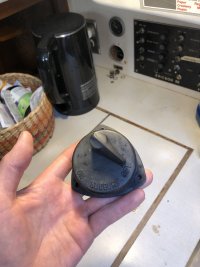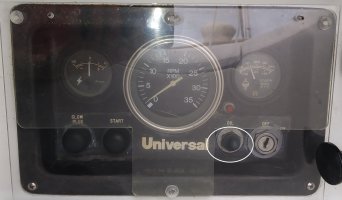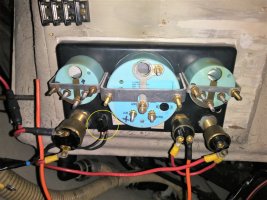Just getting back to the boat today to take some photos of what I’m dealing with - if only for entertainment value.
Keeping the bilge blower as a safety makes sense to me for the moment - although I don’t think I’ve ever actually used it. If it ever failed I don’t know that I could justify the cost of replacement. But then again, if I never use it it will never fail, right?
I also pulled the air filter from my engine and attached a photo of what I’m dealing with - I do like the idea of replacing it with a K&M. I’ll get one on order.
The air filter should definitely go, just because it's so inefficient and replacing it is inexpensive for the improvement.
Your wiring could be better organized but is comparatively not that bad. It does look like you could install a new face plate to add the circuits you want to and make it look good. Getting faceplates engraved is not terribly expensive if you shop around.
Meanwhile look for potential issues which can stop you or create problems. The boat I have is honestly not bad but I mentioned the choke point right below the C/B panel in the E32-3 yesterday, and below is a photo I took last night. The heavy cable is from the battery and it is chafing/pinching the alternator field wire. To make it even more silly, the battery cable is not in a conduit (PVC tube) so it can rub the fiberglass but a ground cable is.

Another typical was unwrapping the trailer connector to cut it out and found why I could not locate the red wire at this end. Somebody butt-spliced in a pink for it and a plain gray for a gray with a tracer. This was all covered by wrapped black tape. The pen is pointing at green corrosion coming from a contact in the trailer connector. Corrosion creates resistance which creates heat. The yellow/red was a recommended mod some time ago, they just didn't bother capping/insulating the end.

The fuel quantity wire had three butt splices - and three wire colors - within about 3 feet. It was not functional because one of the splices was corroded. Normal stuff to find and fix in an older boat.




